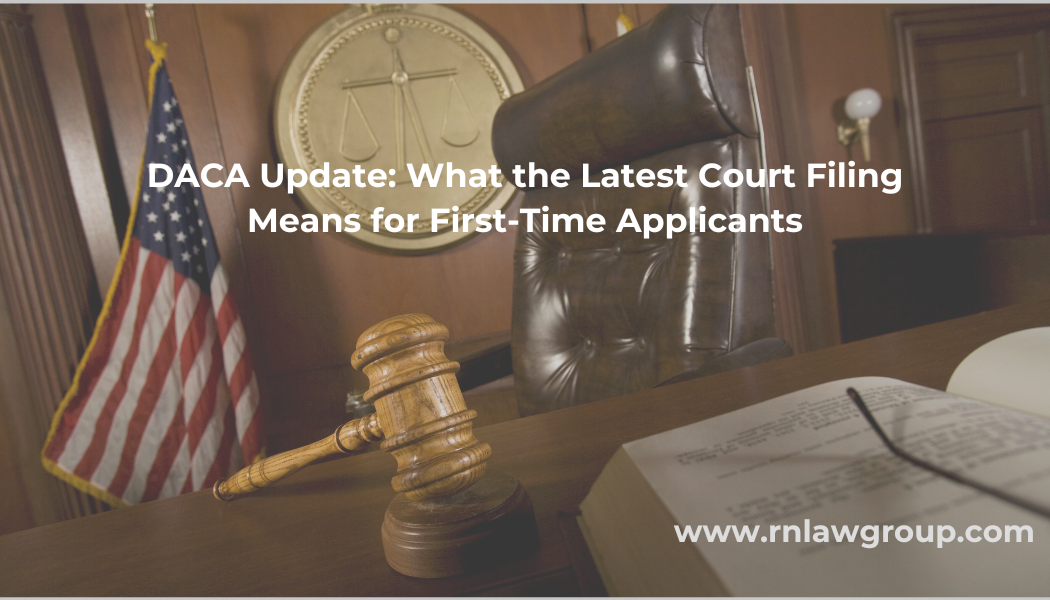
DACA Update: What the Latest Court Filing Means for First-Time Applicants
What is DACA?
Deferred Action for Childhood Arrivals (DACA) is a program first created in 2012 by the Department of Homeland Security (DHS). It provides certain undocumented individuals who were brought to the United States as children — often called “Dreamers” — with protection from deportation and eligibility for work authorization.
To qualify, applicants must meet specific criteria, including age at entry, continuous residence, education or military service, and good moral character. Importantly, DACA is not a pathway to permanent status or citizenship, but it has allowed hundreds of thousands of people to live and work lawfully in the U.S. on a renewable two-year basis.
The History of DACA Litigation
Since its creation, DACA has been the subject of ongoing legal and political battles:
- 2012–2016: DACA was implemented through executive action under President Obama. Efforts to expand it through DAPA (Deferred Action for Parents of Americans) were blocked by the courts.
- 2017: The Trump Administration attempted to rescind DACA entirely. That rescission was challenged in court.
- 2020: The Supreme Court ruled in DHS v. Regents of the University of California that the rescission was improper under administrative law, keeping DACA alive but vulnerable.
- 2021: In Texas v. United States, Judge Andrew Hanen (S.D. Tex.) found that DACA was unlawful and blocked new, initial applications from being approved. Renewals for existing recipients were allowed to continue.
- January 2025: The Fifth Circuit narrowed the injunction so that it applied only within Texas. This ruling meant the district court’s bar on new approvals could no longer automatically block the program nationwide.
The Current Status of DACA
- Renewals: Individuals who already have DACA can continue to file for renewals.
- Initial Applications: Since 2021, USCIS has been unable to approve first-time DACA requests. Applicants could file, but their cases remained frozen.
- Legal Limbo: Courts have repeatedly ruled that DACA exceeds executive authority, but they have also recognized the serious reliance interests of recipients, which is why renewals have been preserved during litigation.
The Latest Filing: A Possible Reopening for First-Time Applicants
In late September 2025, the federal government (DOJ and DHS) submitted a filing in Texas v. United States proposing a path forward. The proposal reflects the Fifth Circuit’s January 2025 decision narrowing the injunction to Texas only.
- Outside Texas: The government has asked the court to allow USCIS to resume processing initial DACA applications filed both before and after the 2021 injunction. This would reopen DACA to first-time applicants nationwide, except in Texas.
- Inside Texas: Because the injunction still applies there, the government proposes that applicants residing in Texas would only be eligible for deferred action (protection from deportation) — but not for work permits or “lawful presence” status.
Why Not Texas?
The reason Texas is treated differently lies in the Fifth Circuit’s ruling. In January 2025, the court limited Judge Hanen’s injunction so that it would only apply in Texas. That means:
- In the other 49 states and Washington, D.C., the injunction no longer prevents USCIS from granting full DACA benefits.
- In Texas, however, the district court’s injunction remains in effect.
- As a result, USCIS cannot lawfully issue work authorization or lawful presence through DACA to Texas residents — though the agency may still provide deferred action alone.
This creates the unusual outcome of geographic inequality: DACA could be fully available in most of the U.S. but restricted in Texas. It also raises complications for current or future recipients — moving to Texas could jeopardize continued employment authorization.
What’s Next?
The government’s plan is still subject to court approval. USCIS has not announced a timeline for when (or if) it will begin adjudicating new DACA applications outside Texas. Until the court rules, initial applicants remain in limbo.
For now:
- Current DACA recipients should continue to file timely renewals.
- First-time applicants outside Texas may soon see their cases move forward, if the court approves the plan.
- Applicants in Texas remain limited to deferred action without work permits.
Conclusion
DACA’s future remains uncertain, but this latest filing marks the first real possibility in years that new, first-time applicants could benefit — at least outside of Texas. The legal battles will continue, and Congress remains the only body with authority to provide a permanent solution.
By: Emily Neumann
Emily Neumann is Managing Partner at Reddy Neumann Brown PC with over 15 years of experience practicing US immigration law providing services to U.S. businesses and multinational corporations. Emily has helped transform the firm from a solo practice to Houston’s largest immigration law firm focused exclusively on U.S. employment-based immigration. She received her Bachelor’s degree in Biology from Central Michigan University and her Juris Doctorate degree from the University of Houston Law Center. Emily has been quoted in Bloomberg Law, U.S. News & World Report, Inside Higher Ed, and The Times of India on various hot topics in immigration. She is a member of the American Immigration Lawyers Association and Society for Human Resource Management.

